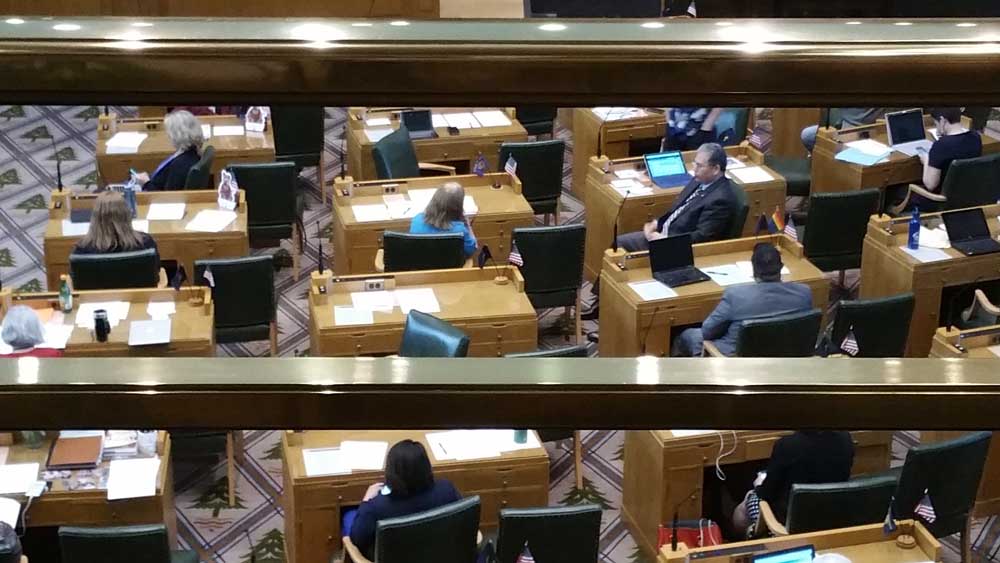Editorial: Great earnings don’t mean PERS issues are over
Published 12:00 am Friday, February 2, 2018

- Members of the Oregon House at work in 2017. (Gary A. Warner, The Bulletin)
The stock market’s record run has been good for the state’s Public Employees Retirement System. The state’s PERS assets earned a rate of return of 15.3 percent — double what the state had assumed. Those bull market returns could shave a few billions off the system’s $25 billion shortfall in meeting debts.
But it’s not going to be enough. For the next five years, school districts and the other state employers are going to have to spend more and more of their payrolls to keep the system afloat.
Trending
It’s going to be felt locally. Think about how it will effect schools.
We have mentioned this before, but it is worth remembering. Bend-La Pine Schools may see a $5 million increase in its costs for the 2019-20 school year because of increased contributions it will be required to make to PERS. The district spends about $88 million on salaries now, which makes up about the bulk of its expenses. It has options on how it could pay for the increase, although none of them are particularly good. “It could mean a reduction in these costs through adjusting number of positions, rate of pay, or number of days,” the district has told us. And the hard thing about it is contributions for the district are supposed to go up again and again.
State Sen. Tim Knopp, R-Bend, repeatedly has tried to lead the Legislature to tackle the issue directly and make changes to PERS. One idea is to have employees on PERS make a contribution into the fund. But Democrats who control the Legislature have delayed those discussions or even argued that nothing needs to be done.
Gov. Kate Brown is trying two things, as The Oregonian’s Ted Sickinger reported. One idea is to have the state direct state revenue to pension costs. But shouldn’t the state’s pension system be reformed before taxpayers bail it out?
Her second idea is to have state public employers — such as a school district — deposit reserves in PERS accounts that are invested. Those accounts could earn interest that could pay down the future debt obligations. The trouble with that idea is that the stock market doesn’t always go up. Investors sometimes win. They sometimes lose.
Brown’s ideas would be more palatable if they were matched by PERS employees contributing to the retirement fund. That is not too much to ask.








